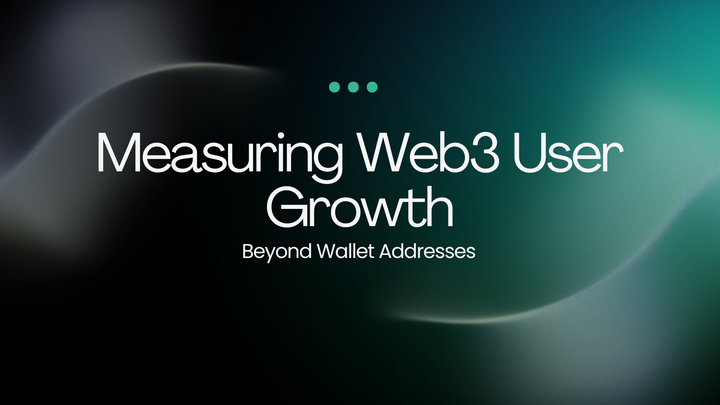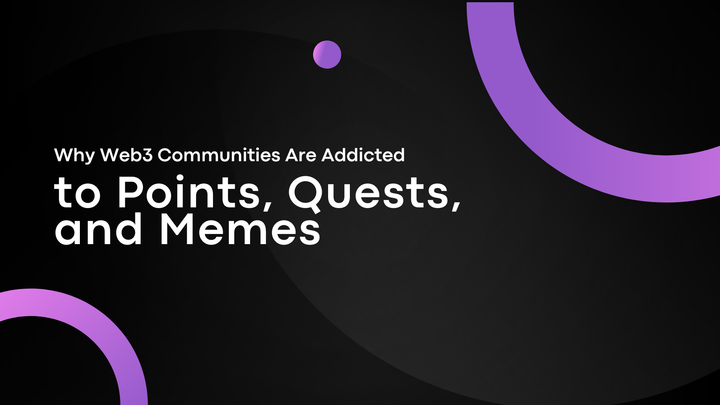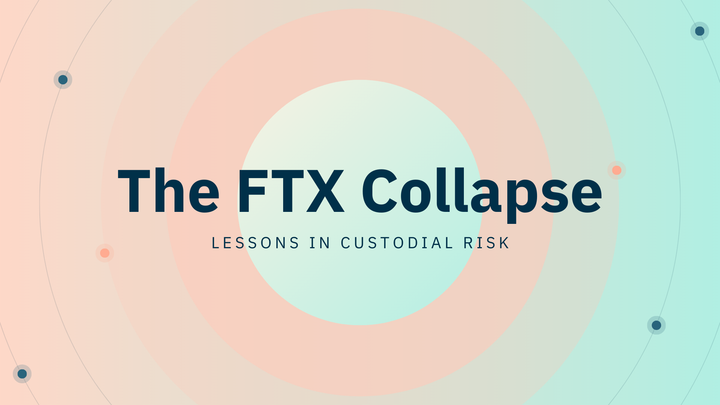Mitosis: Architecting Seamless Liquidity Bridges in a Modular Blockchain World
An Inkling: The burgeoning landscape of decentralized finance, while demonstrating remarkable innovation, grapples with a fundamental challenge: the dispersion of liquidity across an increasing number of distinct blockchain networks. This fragmentation not only complicates the user experience by necessitating intricate cross-chain transfers but also diminishes the potential for unified capital pools that could enhance overall efficiency and foster greater network effects. The rise of modular blockchain architectures, intended to improve scalability and customization, paradoxically exacerbates this issue by introducing even more isolated ecosystems.
Introduction: Navigating the Liquidity Maze in DeFi: In an era where blockchain technology is rapidly evolving, the decentralized finance (DeFi) space is witnessing an unprecedented proliferation of networks, each with its own unique characteristics and applications. This expansion, while fostering innovation, has led to a significant challenge: how can users seamlessly access and utilize their digital assets across this growing multitude of increasingly specialized blockchains? What are the inherent costs and complexities associated with the necessary bridging and swapping of assets between these disparate ecosystems? Furthermore, how does this fragmented liquidity landscape ultimately impact the overall efficiency and continued growth of the DeFi sector? The very act of this segmentation creates inherent barriers and inefficiencies, often forcing users to make difficult choices between participating in specific applications and maintaining liquidity within their preferred networks. This also results in duplicated efforts in establishing sufficient liquidity within each isolated blockchain environment. To understand the significance of this challenge and the potential solutions emerging, it is crucial to briefly examine the evolution of liquidity protocols and their profound impact on the DeFi ecosystem. The journey began with early centralized exchanges, which, despite their limitations, provided the initial infrastructure for digital asset trading. The advent of decentralized exchanges (DEXs) such as Uniswap and(https://balancer.fi/) marked a revolutionary shift, introducing automated market maker (AMM) models and the concept of liquidity pools that allowed for permissionless trading. Subsequent innovations further refined these models, with stablecoin-focused exchanges like Curve Finance optimizing for minimal slippage and capital-efficient solutions like Uniswap V3 enabling concentrated liquidity. Each of these advancements addressed specific limitations of their predecessors, contributing to a more sophisticated and diverse DeFi ecosystem. However, despite these significant strides, the challenge of efficiently moving and utilizing liquidity across different blockchain networks has persisted as a major hurdle. It is within this context that Mitosis emerges as a novel solution, specifically designed to address the unique challenges of the modular blockchain ecosystem , offering what it describes as a "new, capital efficient paradigm in cross-chain interoperability". By focusing on this emerging modular paradigm, Mitosis aims to provide a foundational layer for liquidity that can support the interconnected future of blockchains, rather than treating each chain as an isolated entity.
Unveiling Mitosis: A Layer 1 Solution for Programmable Liquidity: At its core, Mitosis is an Ecosystem-Owned Liquidity (EOL) Layer 1 blockchain purpose-built to tackle the challenges of liquidity management in the context of modular blockchain ecosystems. Unlike many other liquidity protocols that operate as decentralized applications (dApps) on existing blockchains, Mitosis is a dedicated Layer 1 network , signifying a fundamental commitment to addressing cross-chain liquidity at the infrastructure level. The concept of "Ecosystem-Owned Liquidity" is central to Mitosis'sdesign, suggesting a decentralized governance model where the community plays a crucial role in how liquidity is managed, distributed, and incentivized. This approach potentially fosters a more inclusive and community-driven ecosystem. Enabling this cross-chain functionality is Morse , the critical infrastructure layer that allows Mitosis to seamlessly connect with other blockchain networks. Morse facilitates the secure and efficient transfer of both digital assets and essential data between these interconnected networks. A key feature of Morse is its asynchronous messaging system , which enables real-time data exchange between different blockchains, ensuring a smooth and responsive flow of information and transactions. A central innovation of the Mitosis protocol is the introduction of miAssets . These are tokens that are issued in a 1:1 ratio to the assets deposited on the Mitosis chain. However, their significance lies in their role as cross-chain liquidity tokens, capable of moving freely and permissionlessly between various connected blockchain networks via the Morse bridge . These miAssets are described as "productive and versatile" , allowing users to actively participate in diverse DeFi ecosystems across different chains and earn revenue from these cross-chain interactions. This mechanism aims to enhance capital efficiency by ensuring that liquidity is not locked within a single chain but can be dynamically deployed where it is most needed. Furthermore, Mitosis leverages the Hyperlane protocol for permissionless interoperability , enabling the free movement of miAssets between blockchains without requiring complex permissions.
The Pioneering Era: Laying the Foundation for Decentralized Exchange: The initial foray into(https://www.gemini.com/cryptopedia/decentralized-exchanges-dexs) technology revealed inherent limitations in providing sufficient liquidity. Early DEXs that relied on traditional order book models often suffered from low trading volumes and slow transaction speeds, primarily due to the challenge of attracting enough participants to both place and fill orders. This environment highlighted the pressing need for innovative mechanisms to incentivize liquidity provision in a decentralized manner and to ensure more efficient trading experiences. The emergence of Automated Market Makers (AMMs) marked a significant turning point in addressing these challenges. Uniswap V1 stands as a pioneering example, introducing a groundbreaking approach based on a simple yet elegant constant product formula: x*y=k. In this model, liquidity providers (LPs) deposit an equivalent value of two different tokens into a shared liquidity pool . The price of these tokens within the pool is then algorithmically determined by the constant product formula, where the product of the quantities of the two tokens (x and y) must always equal a constant (k). This design allowed for swaps between ETH and any ERC-20 token in a permissionless manner, without the need for traditional order books or market makers. Liquidity providers were incentivized to participate by receiving LP tokens representing their share of the pool and earning a portion of the transaction fees generated from trades.21, 22, 27, 44 further expanded upon the AMM concept by introducing the innovation of multi-asset liquidity pools . Unlike Uniswap V1, which focused on pairs of tokens,(https://balancer.gitbook.io/balancer/core-concepts/protocol/index) allowed for the creation of liquidity pools containing up to eight different tokens, each with customizable weights determining its proportion within the pool . This flexibility enabled the creation of self-balancing portfolios, where the pool automatically adjusts the token ratios based on trading activity, and facilitated more complex trading strategies .(https://balancer.gitbook.io/balancer/core-concepts/protocol/index) also introduced the BAL governance token, which allowed holders to participate in the protocol's decision-making processes . Different types of pools were also offered, including public pools open to all liquidity providers, private pools controlled by a single entity, and smart pools with programmable functionalities .
Refining the Model: Addressing Specific Needs and Enhancing Efficiency: Building upon the foundation laid by Uniswap V1, Uniswap V2 introduced several key advancements, most notably the ability to perform direct swaps between any two ERC-20 tokens . This eliminated the previous requirement in V1 where all trades had to be routed through ETH, significantly improving the user experience and reducing gas costs associated with trading.Uniswap V2also implemented protocol fees, a small percentage of trading fees that were directed towards the protocol's development and sustainability . Furthermore, it featured more advanced oracle functionality, providing more reliable and manipulation-resistant price feeds for other DeFi applications . Curve Finance emerged to address a specific need within the DeFi ecosystem: the efficient trading of stablecoins and other assets with similar price values . Unlike the constant product formula used by Uniswap, which could lead to significant price slippage for large trades involving stablecoins, Curve Finance utilized a specialized AMM algorithm optimized for low slippage between these types of assets . This was achieved through the use of stable liquidity pools containing stablecoins like DAI, USDC, and USDT, or wrapped versions of assets like Bitcoin . Curve Finance also introduced the CRV governance token, which incentivized liquidity providers and allowed the community to participate in the protocol's governance . Its focus on minimizing slippage and providing high liquidity for stablecoins made Curve Finance a crucial component of the DeFi infrastructure, particularly for lending, borrowing, and yield farming activities involving stable assets .
The Current Landscape: Innovations in Capital Efficiency and Customization: The current iteration of Uniswap, V3, brought a revolutionary concept to the forefront: concentrated liquidity . This innovation allows liquidity providers (LPs) to allocate their capital to specific price ranges within a trading pair, rather than having their liquidity spread uniformly across the entire price spectrum from zero to infinity . By focusing their liquidity within a defined range where they anticipate most trading activity, LPs can achieve significantly improved capital efficiency, earning a greater share of trading fees with the same amount of capital . Uniswap V3 utilizes "ticks" to divide the price range into discrete intervals, and LPs can create "positions" by specifying a lower and upper price bound for their liquidity . If the market price moves outside of this range, the LP's liquidity becomes inactive and no longer earns fees . Uniswap V3 also introduced range orders , which function similarly to traditional limit orders, and multiple fee tiers for different trading pairs, allowing LPs to be compensated appropriately for the varying degrees of risk associated with different assets. Liquidity positions in V3 are represented by non-fungible tokens ((https://ethereum.org/en/nft/)) , reflecting the unique price range and amount of liquidity provided.4, 24, 36, 51 introduced a fundamentally new architectural element: the Vault system . This central vault manages all the assets within the(https://balancer.gitbook.io/balancer-v2/) protocol, significantly improving gas efficiency for trades . Instead of each liquidity pool managing and storing its own tokens, the Vault allows for internal balance management, meaning users only incur gas costs when depositing or withdrawing assets from the Vault, even if their trades involve multiple pools .(https://balancer.gitbook.io/balancer-v2/) also enabled single-sided liquidity provision, allowing users to invest in a pool with any combination of tokens and amounts, rather than being required to provide proportional amounts of all assets in the pool . Furthermore, it features improved smart order routing, which optimizes trade execution across different pools to find the best prices .(https://balancer.gitbook.io/balancer-v2/) continues to support customizable weighted pools, offering a high degree of flexibility for liquidity providers and pool creators .
Mitosis in Context: A Comparative Analysis of Liquidity Protocol Mechanisms: Examining Mitosis alongside the evolution of liquidity protocols reveals its distinct focus and intended value proposition. While previous and current protocols have primarily concentrated on enhancing capital efficiency, optimizing for specific asset types like stablecoins, or providing greater customization within single blockchain environments, Mitosis is uniquely designed for cross-chain interoperability, specifically tailored for the modular blockchain ecosystem. The core mechanisms of Mitosis – miAssets, Morse, and Hyperlane – directly address the challenges of fragmented liquidity across multiple chains, a problem that other protocols have not explicitly tackled at their foundational level. The following table provides a comparative overview of the key mechanisms and focuses of these protocols:
| Protocol | Core Mechanism(s) | Cross-Chain Focus | Modular Focus | Capital Efficiency | Stablecoins Focus | Customization |
|---|---|---|---|---|---|---|
| Uniswap V1 | Constant Product (x*y=k) | No | No | Moderate | No | Limited |
| (https://balancer.gitbook.io/balancer/core-concepts/protocol/index) | Weighted Pools | No | No | Moderate | No | High |
| Uniswap V2 | Constant Product (x*y=k), Direct Token Swaps | No | No | Moderate | No | Limited |
| Curve Finance | StableSwap Invariant | No | No | High | Yes | Moderate |
| Uniswap V3 | Concentrated Liquidity, Multiple Fee Tiers | No | No | Very High | No | High |
| (https://balancer.gitbook.io/balancer-v2/) | Weighted Pools, Vault System, Single-Sided Liquidity | No | No | High | No | Very High |
| Mitosis | miAssets, Morse, Hyperlane | Yes | Yes | High | Potentially | Programmable |
As the table illustrates, Mitosis distinguishes itself with its explicit cross-chain focus and its design tailored for modular blockchains. Its use of miAssets as transferable cross-chain liquidity tokens, facilitated by the Morse bridge and enabled by the permissionless interoperability of Hyperlane , offers a novel approach to unifying liquidity across different blockchain networks. This mechanism aims to provide active liquidity utilization across various DeFi ecosystems , potentially leading to increased returns for users compared to traditional bridging solutions where assets are often locked and idle. Furthermore, by focusing on the modular blockchain paradigm, Mitosis is positioning itself to potentially improve upon the limitations of existing cross-chain solutions. Traditional bridging mechanisms can involve locked capital, introduce complexities, and carry potential security risks. miAssets, as native tokens on the Mitosis chain with cross-chain transfer capabilities, offer a more liquid and potentially safer way to participate in cross-chain DeFi activities. This dedicated approach to cross-chain liquidity within the context of modular architectures represents a significant departure from previous and current liquidity protocols that have primarily operated within the confines of single blockchain environments.
The Unique Value Proposition: Ecosystem Ownership and Enhanced LP Experience: A defining characteristic of Mitosis is its designation as an "ecosystem-owned liquidity Layer 1 blockchain" . This concept of Ecosystem-Owned Liquidity (EOL) suggests a governance model where the community plays a central role in the protocol's development, operation, and future direction. This could involve mechanisms for token holders to vote on protocol upgrades, the distribution of rewards, and the overall strategic direction of the Mitosis ecosystem. Such a model has the potential to foster a more decentralized and community-driven approach to liquidity management, attracting a broader range of participants who feel a sense of ownership and are incentivized to contribute to the network's growth. Beyond governance, Mitosis aims to enhance the liquidity provision experience for both DeFi projects and individual liquidity providers . For DeFi projects launching on modular blockchains, Mitosis offers the potential for targeted marketing to attract liquidity . For liquidity providers, Mitosis introduces the innovative ability to trade tokenized LP positions on the Mitosis chain itself . This feature could provide greater flexibility and composability for managing and utilizing LP positions. Instead of having their capital locked within a specific liquidity pool on a single chain, LPs could potentially trade their tokenized representations on secondary markets, allowing for easier entry and exit from positions and potentially unlocking new DeFi strategies. The integration of Mitosis with platforms like OKX Wallet further underscores its commitment to user accessibility. This integration provides the OKX Web3 community with seamless access to the Mitosis protocol and its functionalities . Moreover, Mitosis's participation in initiatives like the Mantle Yield Lab indicates a willingness to collaborate with other prominent ecosystems within the DeFi space. Such collaborations can help to bootstrap liquidity, expand the reach of Mitosis, and foster greater interoperability within the broader DeFi landscape.
Looking Towards the Future: Mitosis and the Evolution of Cross-Chain DeFi: As Mitosis prepares for its mainnet launch in Q4 2024 , the DeFi ecosystem is keenly anticipating its potential impact on cross-chain liquidity and the burgeoning modular blockchain space. A successful launch could mark a significant step forward in addressing the persistent challenges of liquidity fragmentation and usher in an era of more seamless and efficient cross-chain DeFi applications. Mitosis's fundamental focus on cross-chain interoperability has broader implications for the entire blockchain ecosystem. By facilitating the seamless and permissionless movement of both assets and data between different blockchain networks , Mitosis could pave the way for the development of entirely new categories of cross-chain DeFi applications that can leverage the unique strengths and functionalities of multiple blockchains simultaneously. Furthermore, its specific design for the modular blockchain ecosystem positions Mitosis as a potentially crucial piece of infrastructure for the growth and widespread adoption of this emerging paradigm. By providing a unified liquidity layer that can connect and support various specialized modular chains, Mitosis could significantly enhance the user experience and foster greater composability within this interconnected future. However, as with any nascent technology, the long-term success of Mitosis will depend on its ability to navigate various challenges. What obstacles might Mitosis encounter in achieving widespread adoption across a diverse range of blockchain ecosystems? How will it ensure the security and reliability of its cross-chain transfers, particularly as the number of connected chains grows? How will Mitosisdifferentiate itself and compete effectively with other emerging cross-chain solutions and protocols? Finally, what mechanisms will be put in place to ensure the long-term sustainability and effective governance of the Mitosis ecosystem as it continues to evolve? These are critical questions that will shape the future trajectory of Mitosis and its role in the broader DeFi landscape.
Conclusion: Mitosis - A Novel Approach to Unifying Liquidity in a Modular World. In summary, Mitosis presents a compelling and innovative approach to tackling the persistent challenge of liquidity fragmentation within the decentralized finance ecosystem. Its unique design as an Ecosystem-Owned Liquidity Layer 1 blockchain, coupled with its core mechanisms of miAssets, the Morse cross-chain bridge, and permissionless interoperability via Hyperlane, positions it as a potential game-changer for cross-chain interactions. By specifically focusing on the emerging modular blockchain paradigm, Mitosis aims to provide a foundational liquidity layer that can connect and support a future of interconnected, specialized blockchains. The concept of ecosystem ownership promises a more decentralized and community-driven approach to governance and development, while the ability to trade tokenized LP positions could enhance the flexibility and composability of liquidity provision. As Mitosis prepares for its mainnet launch, the DeFi community will be watching closely to see how this novel approach unfolds and whether it can indeed deliver on its promise of unifying liquidity in an increasingly modular world, ultimately enhancing the DeFi user experience and fostering greater interoperability across the blockchain landscape.



Comments ()